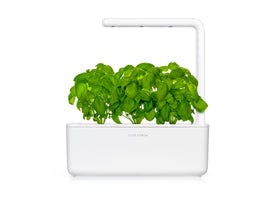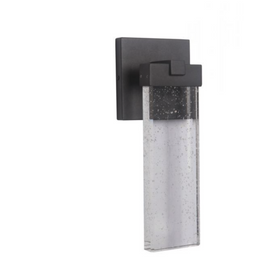
Unleash Your Creativity with Permaculture Design Principles
Last Updated: Apr 13, 2025Have you ever looked at an area of your property and wondered what could successfully grow there? Today's permaculture principles will open your mind to how you can take advantage of every possible space to grow the foods your family loves. These are permaculture principles ten through twelve and the final in this series.
Permaculture Principle #10: Use and Value Diversity
Our yards give us limited space, but that doesn't mean we have to limit our number of plants. By valuing diversity in the yard, we can create niches for more plants and animals than we can imagine. Take Sam Van Aken's work, which took a single tree and grafted 40 types of stone fruit between its branches. This is an excellent example of valuing diversity on a minimal footprint!
Table of Contents
- Permaculture Principle #11: Use Edges and Value the Marginal
- Permaculture Principle #12: Creatively Use and Respond to Change
- Permaculture Design Principles In a Nutshell

By creating a wide variety of different plant species on your property, pests have a harder time navigating to your precious fruits and vegetables. It's this diversity that makes untouched ecosystems so stable. It produces a more extensive selection of food and habitat for living things. Animals, like us, have preferences, and when your yard is a smorgasbord of plant growth, it naturally attracts plenty of beneficial visitors.
How do you achieve diversity in your design? Try to find local food crops that produce at different weeks during the growing season. Doing this puts your household on a seasonal diet, reducing your grocery bill, and cutting down on the emissions it took to transport food to the store. Aim to have flowers blooming every week; this entices beneficial pollinators and shows them that your yard has a steady stream of food. Also, be sure to add lots of native support species. These are species that aid in plant growth, including nitrogen fixers such as beans, peas, clover, and lupine.
We can also value diversity in our community by preserving traditional knowledge. This includes things that used to be common knowledge, like knowing what a bird's call means; when specific bugs arrive and leave each season; or even which plants will grow in your plant hardiness zone. In permaculture, we learn to value the traditional knowledge of others, because people are the heart of permaculture design. We are the providers and caretakers of this planet, and by valuing the labor of people over the convenience of machinery, we benefit all those who work with us.
Permaculture Principle #11: Use Edges and Value the Marginal
Taking advantage of edges and limited space is another fundamental principle of permaculture. Edges of systems have the potential to become the most productive places in your yard. When we imagine the edges of natural landscapes—where the forest meets a meadow or where a lake first touches land—they often have the greatest diversity of species with access to both habitats. Sustainable Mini Wetlands are a great example of taking advantage of the edge for runoff, filtration, and carbon sequestration.
One of the most common edges a homeowner will encounter is your property boundary. Before replacing the older fence that separates your backyard from next door, consider creating a living fence to make the most use of that edge. Living fences are great for providing food, herbal medicines, and even fodder to keep wildlife out of your garden. Choosing something like a living fence over a constructed boundary increases the productiveness of your edge and as it matures, and provides a better habitat for other plants, animals, and insects.

It's always best to find the value in the marginal before disturbing a natural site for more space. Our most impactful work in permaculture can be done on the land already created for humanity. By finding ways for us to maximize productivity in areas already impacted, we are helping bring our cities back into a balanced state with the natural world. And it comes with the added benefit of it being harder to make mistakes in a small, marginal area (Principle #9) than it is in a fully functioning ecosystem. By adding plants to unused marginal space, you are immediately improving it by bringing diversity to the site with minimal competition from established species. And as this marginal area grows more diverse, it creates stability.
As a note, remember to be aware of your property history. If you have an older house, where lead paint may have once been used, consider planting non-edible plants in those marginal spaces where paint could have flaked off. When you plant your garden in south-facing sunlight, consider the dynamic microclimate it creates. You can inoculate dowels with mushroom species and place them in the logs that line the shaded edge. They will enjoy the cooler climate provided by the plants and the extra water that the logs can soak up.
Permaculture Principle #12: Creatively Use and Respond to Change
The final principle we will look at is creatively using features and responding to changes. We live in a world of climate change. These coming changes will challenge us and push us to react on every level, from record heatwaves and droughts to floods and superstorms. We are all learning how to respond, and by making ourselves aware of these things, we can start making small changes today to respond to the climate crisis, biodiversity loss, and soil degradation.

When looking at your yard, try and find what makes it unique. This allows you to develop an equally unique solution and strategy for it. Permaculture embraces creativity because the biggest hurdle in producing abundance is the limit of our creativity. Step outside the box and don't be afraid to make mistakes. It is in our mistakes that we learn what works and doesn't, and like nature, we adapt our practices. All of us have made mistakes in our gardens that we would never make again, even if that mistake is not having started a garden in the first place.
Permaculture Design Principles In a Nutshell
Take advantage of the first principle and take time to observe your yard and explore what creative workaround to problems are possible before beginning. And remember, every situation is different, so continue to use that creativity to come up with new solutions. Some of those problems in your design might also be the solution you are looking for in another location. If your rain barrel is often overflowing, for example, why not have an overflow set to direct water through your garden before going to the street? This takes one problem and creatively responds to solve another. Instead of always wanting to fix problems, we can look at them as something to make better.
Don't forget that small and slow solutions also play into responding to change. Consider ways you can make changes in your yard that will increase production with the least energy invested. Big machines cost money and energy in the form of fuel, and they create largely disturbed areas. Reducing our ecological footprint is something everyone can do at home by limiting the use of these machines and favoring systems that have increased production (or yield from principle #3).
You can take a deep breath because you've reached the end of the 12 permaculture principles. Any new ideas on how you can design your backyard to be flexible towards the unknown future? Any ideas on how we can collectively be the change today?
If you've read through the series, and permaculture is something you would like to do to your property, you can learn more about through Oregon State University's online Permaculture Design Certification. It's a 10-week course where you learn to complete your own permaculture design of your property and receive feedback from instructors and peers. In the end, you will have your unique permaculture design tailored to your preferences!
Tanner Sagouspe
Tanner Sagouspe has a Masters in Environmental Management and is a Permaculture Designer who promotes tackling the climate crisis at home.










